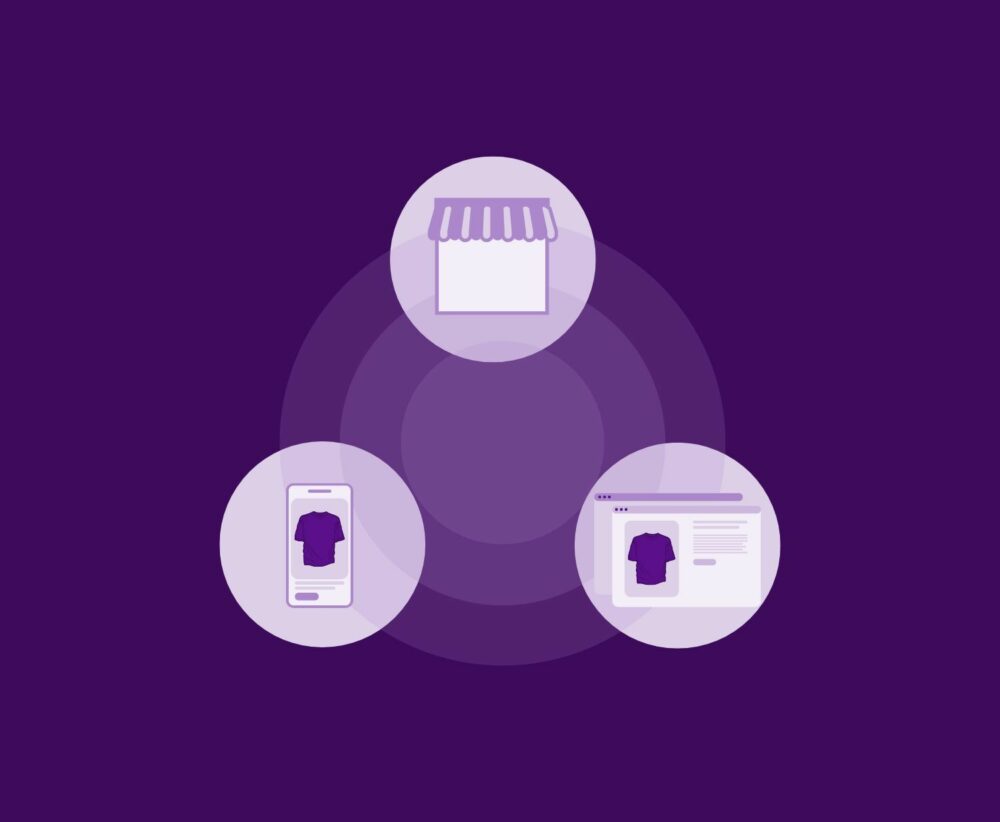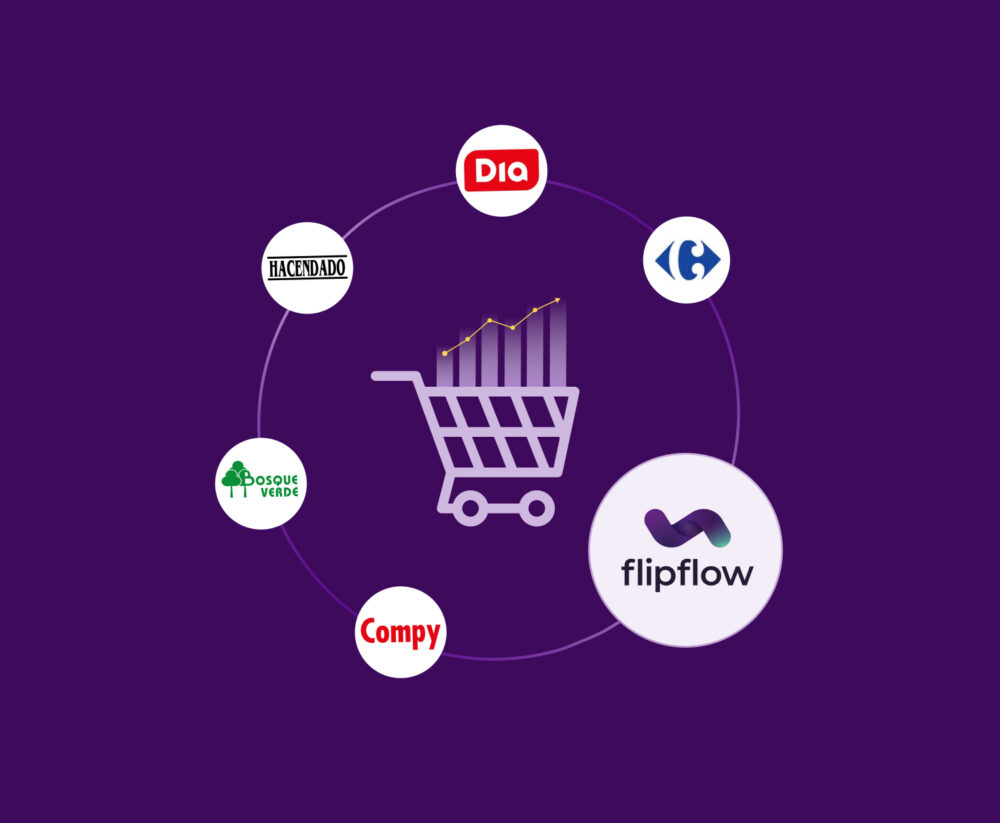Retail Media Audiences: The Challenge of Connecting with Consumers
Digital marketing has undergone a profound transformation in recent years, and one of the most notable changes has been the rise of Retail Media. This phenomenon, which integrates advertising hosted on retailer websites and apps, with the goal of monetizing these spaces and providing visibility to brands, has proven to be a unique opportunity to reach consumers at key moments in their purchase process.
The following chart shows the evolution of global Retail Media advertising spending since 2019 to give you a real idea of the true impact it has had. In 2024, spending has almost tripled:
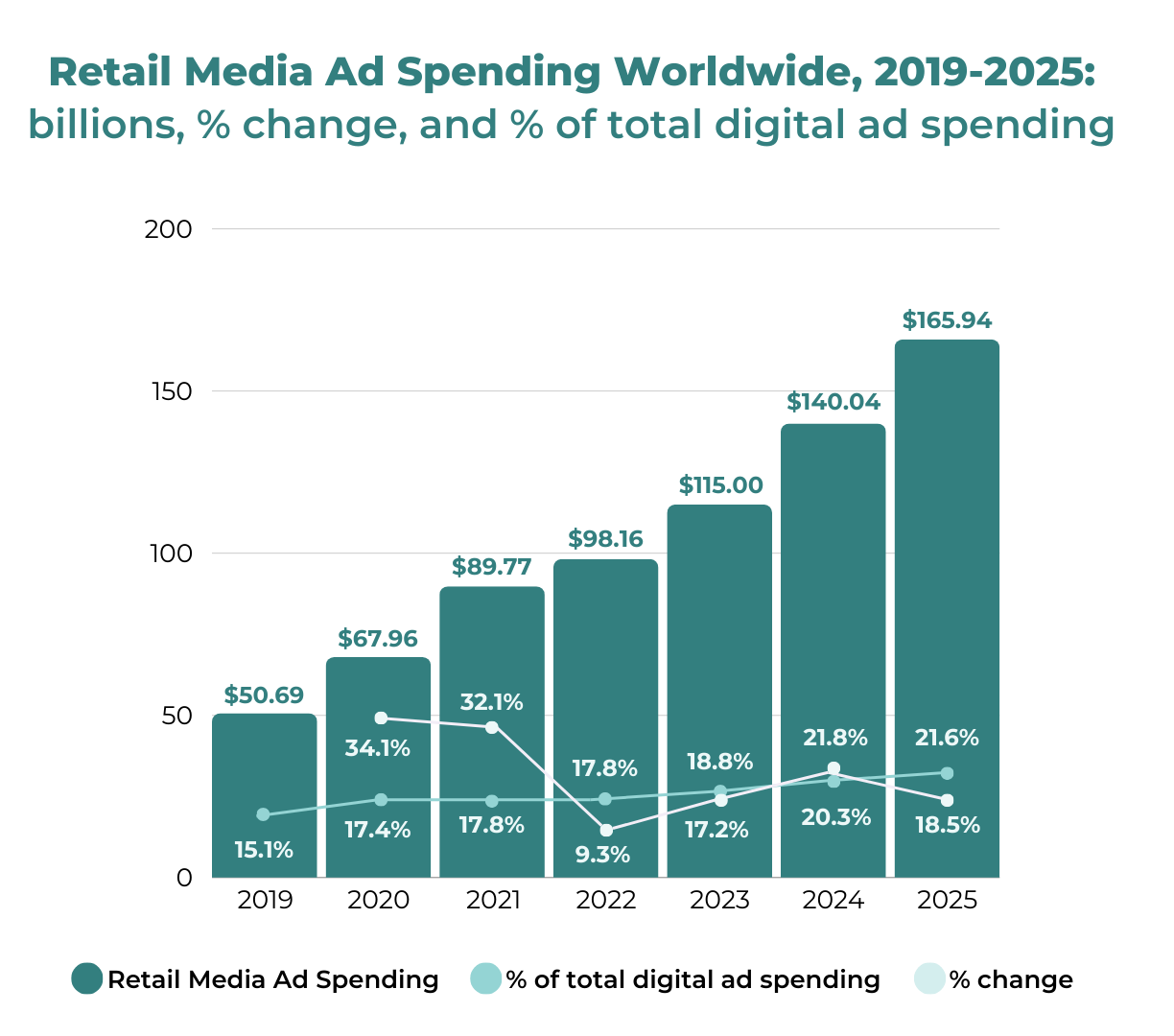
Note: Digital advertising that appears on websites or apps primarily dedicated to retail ecommerce. Or that are acquired through a retailer’s media network or demand-side platform (DSP). Includes ads acquired through Retail Media Networks that may not appear on ecommerce sites or apps.
Source: Insider Intelligence | eMarketer Forecast, December 2023
Retail Media offers something other digital advertising channels cannot: the ability to reach consumers right at the point of sale, whether physical or digital. And a consumer who is already at the point of sale will always be more qualified to convert than one at a less advanced stage of the funnel.
However, as with any form of advertising, one of the biggest challenges is making sure advertising messages are relevant to audiences. This is where brands face the challenge of effectively connecting with consumers. Audiences also play a crucial role in this process.
In this context, the use of first-party data, precise targeting, and new emerging Retail Media formats are redefining how brands build relationships with consumers.
First-Party Data and its Impact on Retail Media Audiences
In the digital market, data is the backbone of any successful campaign. Traditionally, advertisers relied heavily on third-party data to reach their audiences. However, with increased privacy regulations, such as the GDPR in Europe or the CCPA in the United States, and the phasing out of third-party cookies, retailers have started to shift their focus towards first-party data.
First-party data is the information a company collects directly from its customers or users through its own channels. This data can include transactional data, browsing habits, purchase history, and product preferences. Unlike third-party data, which is collected by external entities and often purchased, first-party data is owned by the retailer and under their control.
In the context of Retail Media, this data is extremely valuable. It allows brands to target highly qualified audiences based on real purchase behavior. The impact of this data is enormous, as it not only provides a clear view of the consumer but is also more reliable and compliant with privacy regulations.
In addition, retailers have access to real-time data, allowing them to adjust advertising strategies to quickly adapt to changes in consumer behavior. This represents a significant competitive advantage in a constantly evolving environment. And users are more likely to interact with the content of an ad if they see it at a time that makes sense for their user experience.
The Importance of Audience Segmentation in Retail Media Networks
For Retail Media campaigns to be effective, precise audience segmentation is essential. Not all audiences are created equal, and a generic approach to an advertising campaign can result in losses and decreased effectiveness.
By dividing the audience into smaller segments based on various characteristics, retailers can create more relevant and effective campaigns that resonate with their target audience at the right time. Audience segmentation in Retail Media Networks is becoming vital for increasing revenue and sales.
Types of audience segmentation
Audience segmentation can be done in a variety of ways. Here are some of the most common approaches:
- Demographic segmentation: This is one of the traditional methods, which classifies consumers based on characteristics such as age, gender, or income level. While useful, this type of segmentation is relatively broad and doesn’t necessarily capture the individual motivations of the consumer.
- Geographic segmentation: Classifies consumers based on their physical location. This approach allows brands to tailor their messages and offerings to local needs, trends, and preferences. Geographic segmentation is especially useful for businesses with a presence in multiple locations, allowing them to be more relevant and effective in their communication with each local audience.
- Behavioral segmentation: Using behavioral data, such as purchase history and site visit frequency, retailers can create more detailed profiles of their customers. This type of segmentation is highly effective in Retail Media, as it is based on actual consumer actions, allowing them to target those most likely to buy.
- Intent segmentation: By analyzing search patterns and online behavior, users can be segmented based on their purchase intent. For example, someone who has repeatedly searched for a specific product is in an advanced stage of the customer journey and is more likely to make a purchase.
- Psychographic segmentation: This type of segmentation is based on the values, interests, and lifestyles of consumers. While more difficult to measure, it offers a deeper understanding of personal purchase motivators.
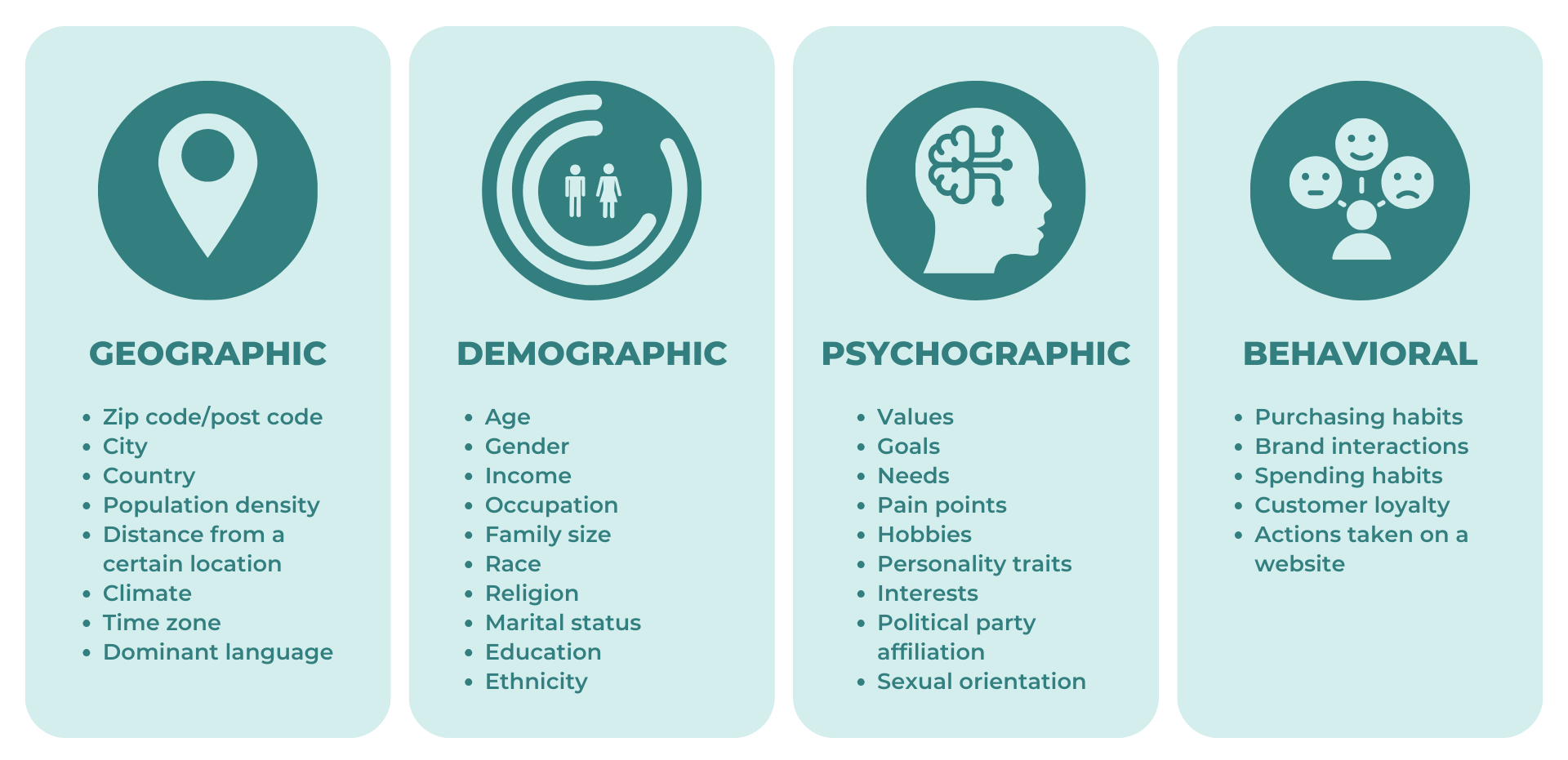
Challenges of Segmenting your Audience
Despite the clear advantages of segmentation, there are also considerable challenges. One of the main ones is the lack of quality or accessible data. Even with first-party data, there is not always enough information to perform detailed segmentation. Additionally, there is the challenge of maintaining consumer privacy, complying with local and international regulations.
Another challenge is over-segmentation and under-segmentation. Over-segmentation can lead to audiences that are too small, which decreases reach and, ultimately, campaign performance. On the other hand, segmenting an audience too broadly can lead to the exclusion of certain groups. It will be necessary to be very careful when performing segmentation to include all relevant audiences.
Finally, measuring the effectiveness of segmented campaigns can also be complex, especially when using multiple tactics and platforms. Aligning KPIs with campaign goals and actual consumer behavior is key to overcoming this challenge.
Benefits of Audience Segmentation
Despite the challenges, the benefits of segmenting audiences are evident. First, it allows for better message personalization. In an environment as competitive as Retail, making messages resonate with consumers is essential. Segmentation allows brands to deliver relevant content, which increases conversion rates and customer loyalty.
In addition, proper segmentation helps optimize marketing budgets. Instead of spending resources on broad and undefined audiences, brands can direct their efforts towards consumers with the highest potential for purchase, improving return on investment.
Emerging Retail Media formats and their audiences
While the majority of Retail Media spending in 2024 will be in the on-site format (according to emarketer predictions), there are other emerging formats gaining relevance that offer new opportunities to connect with audiences:
In-Store
In-store advertising is experiencing a significant evolution. It is necessary to consider that in-store audiences are, on average, 84% larger than digital audiences, according to Retail Media expert Andrew Lipsman in 2023. But advertisers should not only focus on audience size. The environment is important. When a consumer is in the store, they are in “buyer” mode. They may not buy anything on that particular visit, but they will use the in-store experience to examine, compare, and learn more about the products they are interested in.
By targeting consumers who are in an active state of purchase, brands have a better chance of capturing their attention and getting them to make a purchase.
Interactive screens, digital signage, and location-based personalization allow retailers to create unique shopping experiences. The key to In-Store Retail Media will be to use behavioral and location data to deliver relevant content in real time and, in turn, turn visitors into customers.
Streaming
Retail Media is also finding its place on streaming platforms. While consumers are less likely to be in “buy” mode while watching streaming content, for retailers there is an opportunity to raise brand awareness within content and inspire a need to buy.
Brands can leverage highly segmented audiences that consume content on services like Netflix, Amazon Prime, or YouTube. Through agreements with these providers, retailers can place targeted ads to consumers based on their interests and media consumption habits.
On the other hand, there are retailers like Walmart that have gone a step further, introducing “shoppable ads” into NBCUniversal streaming content.
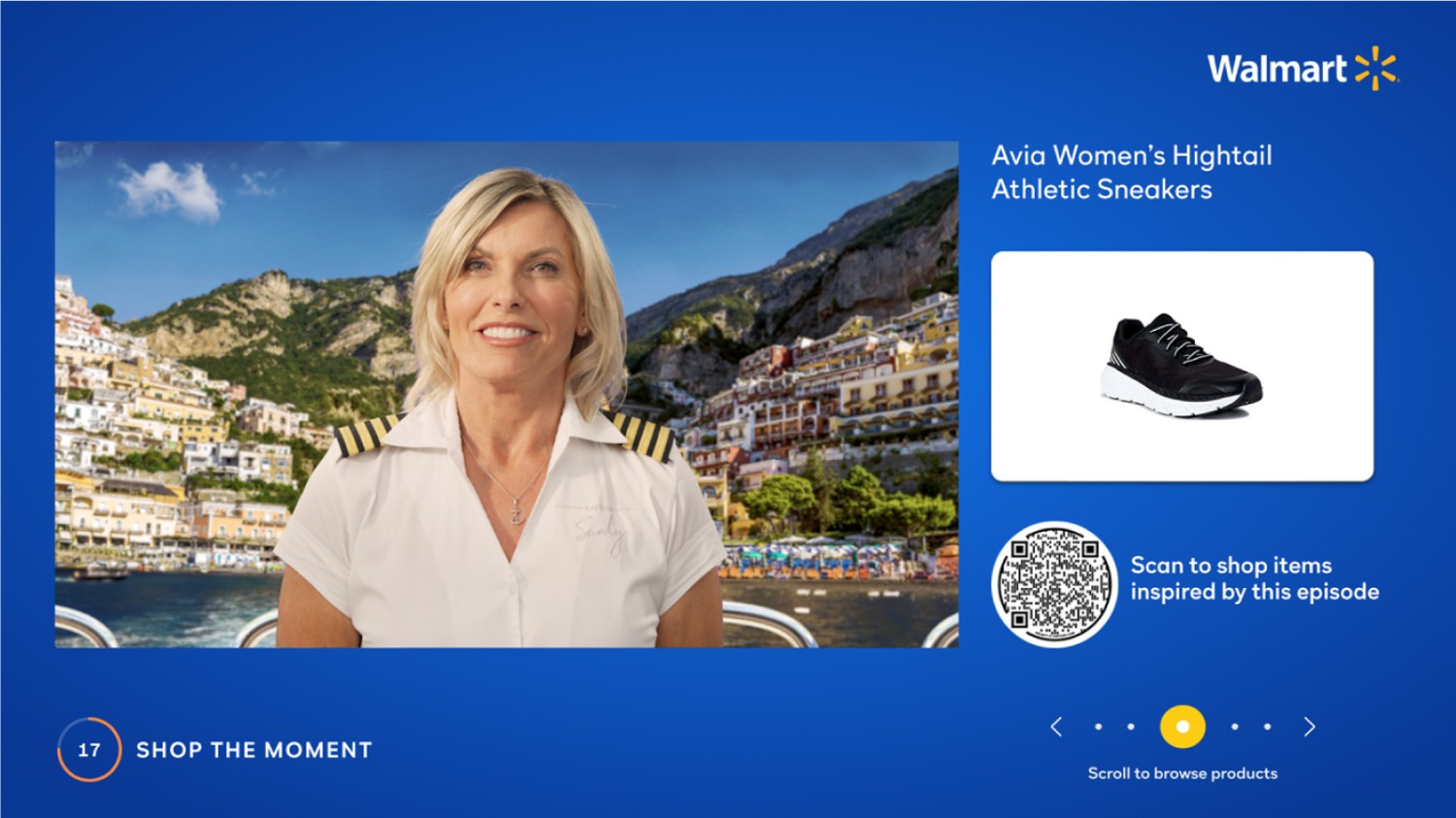
Source: NBCUniversal and Walmart Unite To Enable Bravo Fans To Shop the Moment on Peacock for the First Time
As you can see in the image, this business partnership allows Bravo fans to “shop the moment” on Peacock (an American OTT streaming service operated by NBCUniversal). They can buy directly from the retailer while watching season 8 of “Below Deck Mediterranean” on Peacock, the day after it airs on Bravo. On specific dates, customers will be able to browse Walmart products inspired by those used by the crew and guests of this show (from kitchen utensils to the protagonists’ looks).
As streaming continues to grow, this format offers great potential for reaching mass audiences with personalized content, as Walmart is already doing.
Social Media
Social media has become an integral part of Retail Media, with platforms like Instagram, Facebook, and TikTok leading the way. Here, brands can leverage the advanced targeting capabilities offered by these platforms. They can reach consumers based on their interests, behavior, and social connections.
In addition, they allow for more direct interaction with consumers, fostering brand engagement and loyalty. Like streaming, social media can be used to achieve brand recognition. And they are also very useful for driving conversions by adding ads that allow for direct purchase. But, unlike streaming, each social network attracts different demographics for different reasons. It will be necessary to know how to segment for each of these groups.
An Example of Using Retail Media to Create and Segment Audiences
The Case of Uber in Spain
In late 2023, Uber created its advertising division. This part of the business was born with the goal of providing advertisers with new ways to reach their audiences. It began working in the area of Retail Media, offering Uber and Uber Eats digital spaces to brands as a unique opportunity to reach their potential customers.
As Rodrigo González Lama, Head of Uber Advertising Spain, explained in an interview, Uber offers several advantages as an advertising platform. It allows advertisers to connect with users at key moments, such as while waiting for a ride or an Uber Eats order. These are moments when users are more receptive and engaged with the brand, which increases ad effectiveness.
Additionally, when asked about the type of data they use to segment and personalize ads, he explained that they use data that includes the consumer’s real-time activity (for example, if they are heading to the airport or have just placed a food order at a restaurant) as well as inferred interests from previous trips and orders.
According to González Lama, “Retail Media within Uber is consolidating itself as a powerful tool for brands to reach consumers effectively, using Uber’s digital spaces to increase both visibility and sales of products and services, relying on the large amount of data that the platform generates and stores.“
Conclusions
Retail Media is consolidating itself as one of the most powerful channels for brands to connect with consumers, offering unprecedented opportunities to personalize advertising messages and improve return on investment. However, for campaigns to be effective, it is crucial to understand audiences, leverage first-party data, and segment correctly.
As we have seen in the examples presented throughout this article, the key is to know how to leverage the first-party data that brands have to build ultra-personalized and segmented audiences. Thanks to them, we will be able to connect with consumers right at one of the moments when they are closest to making a purchase.
With a well-defined strategy and a focus on audiences created from all available data, brands will be able to not only capture consumer attention but also build stronger and more lasting relationships in an increasingly competitive environment.

